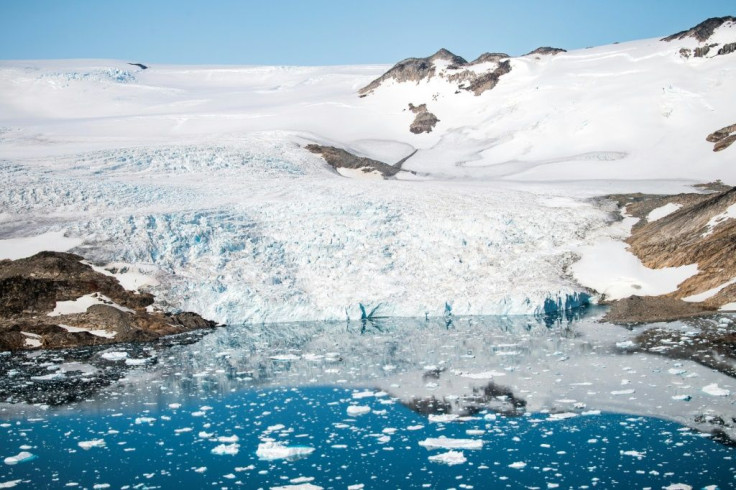Greenland Glacier Meltwater Has 'Surprisingly High' Mercury Levels: Study
KEY POINTS
- Concentrations of mercury in the melting glaciers "comparable to rivers in China"
- Experts studied the bodies of water connected to the Greenland Ice Sheet
- The study was published in Nature Geoscience
A new study has found that the melting glaciers of Greenland have “surprisingly high concentrations of mercury (Hg).” According to the research, concentrations of the toxic element in rivers and fjords connected to the Greenland Ice Sheet are comparable to rivers in industrial China.
The findings raise questions about the effects of glacial melting in an area that is a major exporter of seafood.
An international team of experts studied the bodies of water connected to the Greenland Ice Sheet to better understand the quality of the meltwater from the glacier, Florida State University (FSU) said in a news release. In the study, published in Nature Geoscience, researchers stated that the Greenland Ice Sheet is so far "not accounted for in Arctic mercury budgets."
According to FSU, typical dissolved mercury content in rivers is about 1 – 10 ng L-1, but the researchers found 150 ng L-1 in the glacier meltwater rivers sampled in Greenland.
“There are surprisingly high levels of mercury in the glacier meltwaters we sampled in southwest Greenland,” said study co-author Jon Hawkings, a postdoctoral researcher at Florida State University and the German Research Centre for Geosciences. “And that’s leading us to look now at a whole host of other questions such as how that mercury could potentially get into the food chain.”
"We show that concentrations of dissolved mercury are among the highest recorded in natural waters and mercury yields from these glacial catchments (521–3,300 mmol km−2 year−1) are two orders of magnitude higher than from Arctic rivers (4–20 mmol km−2 year−1)," the researchers wrote.
They said it is likely that this source of mercury is “very likely coming from the Earth itself, as opposed to a fossil fuel combustion or other industrial source.” This shows another possible risk coming from the rapid melting of ice sheets because of warming temperatures.
"We've learned from many years of fieldwork at these sites in Western Greenland that glaciers export nutrients to the ocean, but the discovery that they may also carry potential toxins unveils a concerning dimension to how glaciers influence water quality and downstream communities, which may alter in a warming world and highlights the need for further investigation," study co-author Jenna Wadham, a glaciologist at the University of Bristol's Cabot Institute for the Environment.
#Glacier meltwater from the #GreenlandIceSheet has high levels of the toxic element #mercury, a concerning find in a part of the world where #seafood is a major industry. Research from @FSU_EOAS & @BristolUni’s @cabotinstitute published in @NatureGeosci.https://t.co/jlqYiH2fhV
— FSU Research (@FSUResearch) May 24, 2021
Further research is needed to determine how mercury from the ice sheets affects surrounding bodies of water or even the food chain.
The researchers called mercury a "toxic element of global concern” that bioaccumulates in the aquatic food web. As it happens, Greenland is a major seafood exporter, FSU noted.
"Overexposure to Hg, primarily due to consumption of seafood, has major environmental and human health implications with a socio-economic cost estimated to exceed U.S. $5 billion per year," the experts stated. They said that in the Arctic, for instance, mercury concentrations in marine biota have "increased by an order of magnitude" in the last 150 years.
In 2020, scientists also found that about a third of the fish in the Brazilian Amazon state of Amapa had high concentrations of mercury from illegal mining. Among the fish species with the highest mercury concentrations, four were said to be among the most widely consumed.
"All the efforts to manage mercury thus far have come from the idea that the increasing concentrations we have been seeing across the Earth system come primarily from direct anthropogenic activity, like industry," Hawkings said, adding: "But mercury coming from climatically sensitive environments like glaciers could be a source that is much more difficult to manage."

© Copyright IBTimes 2025. All rights reserved.






















